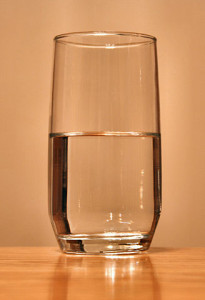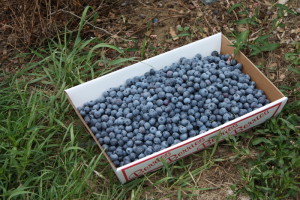How to avoid constipation
Constipation is a very common problem among the elderly and an extremely irritable one. Dr Priyanka Rohatgi gives us the cause behind constipation and how you can avoid it with some simple diet and lifestyle changes.
It’s not the best of topics around the dinner table but surely one of the most important when it comes to seniors. We are talking of constipation, a common problem in the elderly. Studies done in the USA show that constipation is prevalent among 15 to 20 per cent of the community-dwelling elderly population and up to 50 per cent in some studies of nursing home residents.
Pic: Wikimedia Commons
Often, constipation is caused from a combination of factors such as reduced fibre and fluid intake, decreased physical activity resulting from chronic diseases and multiple medications. And while constipation is not necessarily a physiologic consequence of ageing, decreased mobility and other medical conditions may contribute to its increased prevalence among the elderly.
What is constipation?
Constipation occurs when bowel movements become difficult or less frequent, though the length of time between bowel movements vary from person to person. Some people have bowel movements three times a day; others, only one or two times a week. It is too long when you have gone longer than three days without a bowel movement. After three days, the stools become harder and more difficult to pass.
So when should a person be considered constipated? These are the signs:
- Straining during a bowel movement more than 25 percent of the time
- Hard stools more than 25% of the time
- Incomplete evacuation more than 25% of the time
- Two or fewer bowel movements in a week
The cause behind constipation
Constipation is caused mostly by a bowel function disorder. Here are some common causes:
- Not enough water intake
- Not enough activity or exercise
- Not enough fiber in the diet
- A change in regular diet or routine, e.g., while traveling
- Avoiding a bowel movement, sometimes the result of pain from hemorrhoids
- Using too much laxatives (stool softeners) that may weaken the bowel muscles
- Hypothyroidism
- Neurological conditions such as Parkinson’s disease or multiple sclerosis
- Depression and stress
- Excessive consumption of dairy products
- Medicines (especially antacids, strong pain medicines, antidepressants, iron pills)
- Irritable bowel syndrome
- Colon cancer
- Lack of good nerve and muscle function in the bowel in some cases
Increase the fibre content in your diet with broken wheat, fruits, etc (Pic: Silvertalkies)
Here are some constipation relievers:
- Drink a hot beverage or eat hot cereal first thing in the morning.
- Add unprocessed whole grains to foods. Start with one teaspoon ragi malt/oats/broken wheat added to cereal.
- Add flaxseed to foods. Start with one tablespoon ground flaxseed.
- Eat a few dried or stewed prunes or drink prune juice.
- Slowly increase the amount of fiber that you eat. Over the span of a few days, you should increase fiber by no more than 5 grams.
- Talk with your doctor and dietician about the use of stool softeners and laxatives.
Brown rice and lentils are good fibre sources (Pic: Silvertalkies)
The following foods are all good sources of dietary fibre:
- Beans, lentils and peas
- Fresh and dried fruits – particularly if the skins are eaten
- Vegetables – particularly if the skins are eaten
- Nuts and seeds
- Wholemeal and multi grain breads
- Jacket potatoes
- Wholegrain breakfast cereals
- Wholemeal pasta and brown rice
Tips to increase the fibre in your meal
Pic: Silvertalkies
To ensure that you are getting enough fiber, aim to consume 2 cups of fruits and 2.5 cups of vegetables per day. Fiber-rich fruits and vegetables include guava, pomegranate, sweet potatoes, pears, berries, figs, dates, spinach and apples with the skin. Another easy way to meet your fiber needs is to add beans to your diet, as they are an excellent source of fiber. One-half cup of beans contains 9.5 g of fiber, 1/2 cup of kidney beans contains 8.2 g of fiber and 1/2 cup of pinto beans contains 7.7 g of fiber. Replacing white breads, pasta and rice with whole grain breads, whole wheat pasta and brown rice can also add to your fiber intake. Add oatmeal, popcorn and bran cereals to your diet as well. You should also make a rule to only buy grains that contain at least 5 g of fiber per serving.
Comments

Mrs Chandrika Desai
17 Dec, 2020
Thank you so much for the info. Right now I am having constipation and I know the cause is hypothyroidism. But what I am observing now is that due to constipation my blood pressure has increased and I had to start BP medication. Inspite of knowing I have landed up in this! This info may be useful to some!

Radhika
27 Jul, 2013
Excellent, useful article.

Anamika
19 Jul, 2013
Very informative, thanks for sharing!
You may like to read:

Health and wellness
Five Lifestyle Changes To Ease Bladder Control

jessica smith
5 mins read

Health and wellness
Five things to keep in mind when considering organ donation

sunayana singh, ceo of organ india, an initiative of the parashar foundation
3 mins read

Health and wellness
How NURA Uses AI-Enabled Screening to make a difference in Preventive Healthcare

Silver Talkies
4 mins read





Post a comment